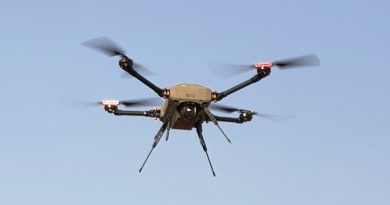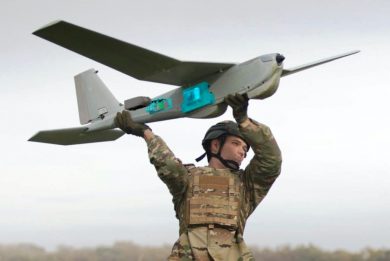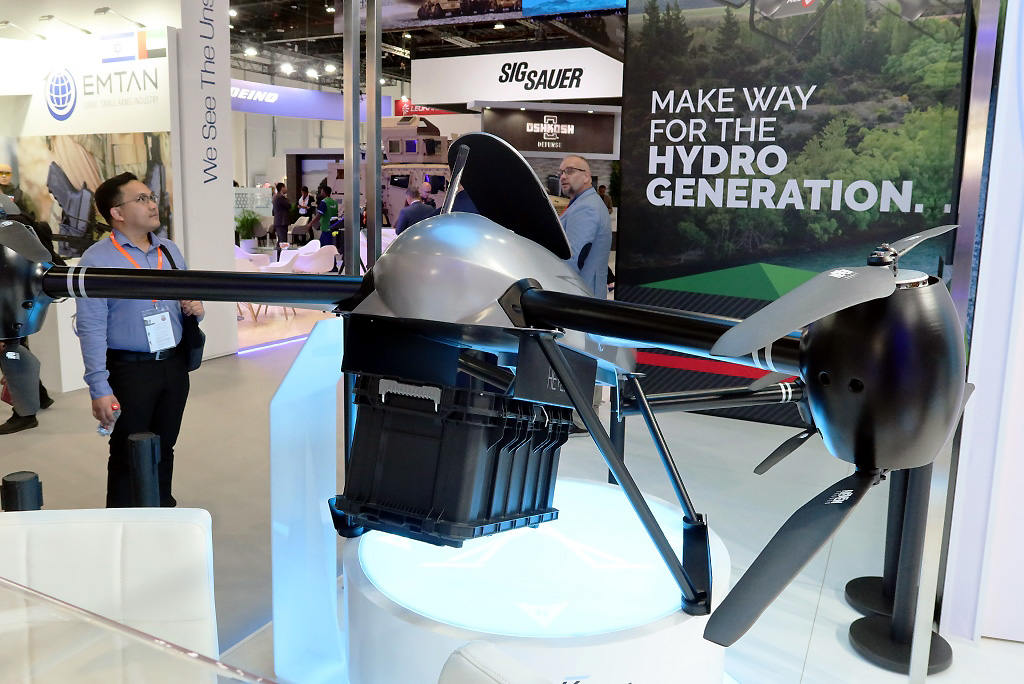
IDEX 2023: Heven Drones unveils its H2D55 hydrogen-powered UAS
Considering that drones must not only fly, but must also be actionable solutions, Heven Drones, an Israeli company based at the Mevo Carmel Science and Industry Park, around 15 km south-east of Haifa, is constantly looking for innovative solutions.
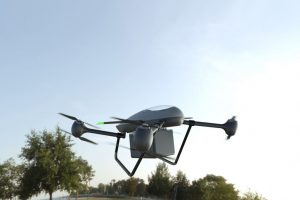
At IDEX 2023 the company unveiled its H2D55, the first two characters indicating the fuel used, hydrogen. Fuel cells used on the drone have five times the power density of normal batteries, hence with the same “fuel” weight the airframe can remain airborne five times more. According to Heven Drones fuel cells offer advantages over lithium-based batteries also in terms of maintenance and life cycle costs, a battery lasting usually 300 reload cycles while a fuel cell can work for over 1,000 hours. Developed both for commercial and military use, the H2D55 is the first member of a family of transport drones, bigger ones being already in the design phase.
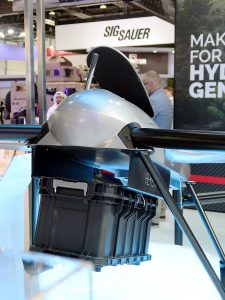
The current drone features an aerodynamic fuselage and two short wings, which provide aerodynamic lift when flying at speed, eight fixed-pitch rotors ensuring lift for vertical take-off and landing as well as thrust for horizontal flight. These are organised in four sets of two counter-rotating rotors located at the end of four booms; the latter are tilted forward and backwards to ensure a larger area of control. According to Heven Drones this, together with multiple-gyroscopes and purposely developed algorithms, ensures drone stability even with a centre of gravity up to 120% away from the mid-point, a considerable increase over conventional solutions. This becomes a key factor when transporting payloads of different nature, these being hosted in a load container located under the fuselage, a fixed tubular landing gear ensuring stand off from ground when landed, allowing the container loading or removal. This can transport a 7 kg maximum payload; with a 5 kg payload the H2D55 has a 100 minutes endurance and can fly at over 60 km distance at a maximum speed of 15 m/s (54 km/h).
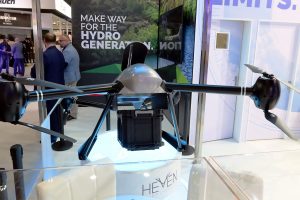
In military use the H2D55 can deliver critical items such as batteries, small amount of ammunition, or blood, however in perspective, with the increase of the Heven Drones hydrogen-based family of UAS, greater payloads will provide higher flexibility. The company has teamed with Plug Power, a fuel cells specialist with operations in the United States, United Kingdom and South Korea. According to Heven Drones tests have been conducted to check the safety of those fuel cells even in demanding environments such as the military one, cells having been shot at, blown up and dropped from over 150 meters without any consequence. The on-board tank ensures hydrogen dissipation over a certain temperature, the company being now busy in increasing the hydrogen admissible pressure in order to increase endurance. A solution ensuring a two hours endurance with an over 100 km range should fly next June.
Heven Drones told EDR On-Line that the system has already bagged a military launch customer in Israel, which is using the H2D55 for operational purposes. A new model with “dozens of kilograms payload” is awaited at short term.
Photos courtesy Heven Drones and P. Valpolini

